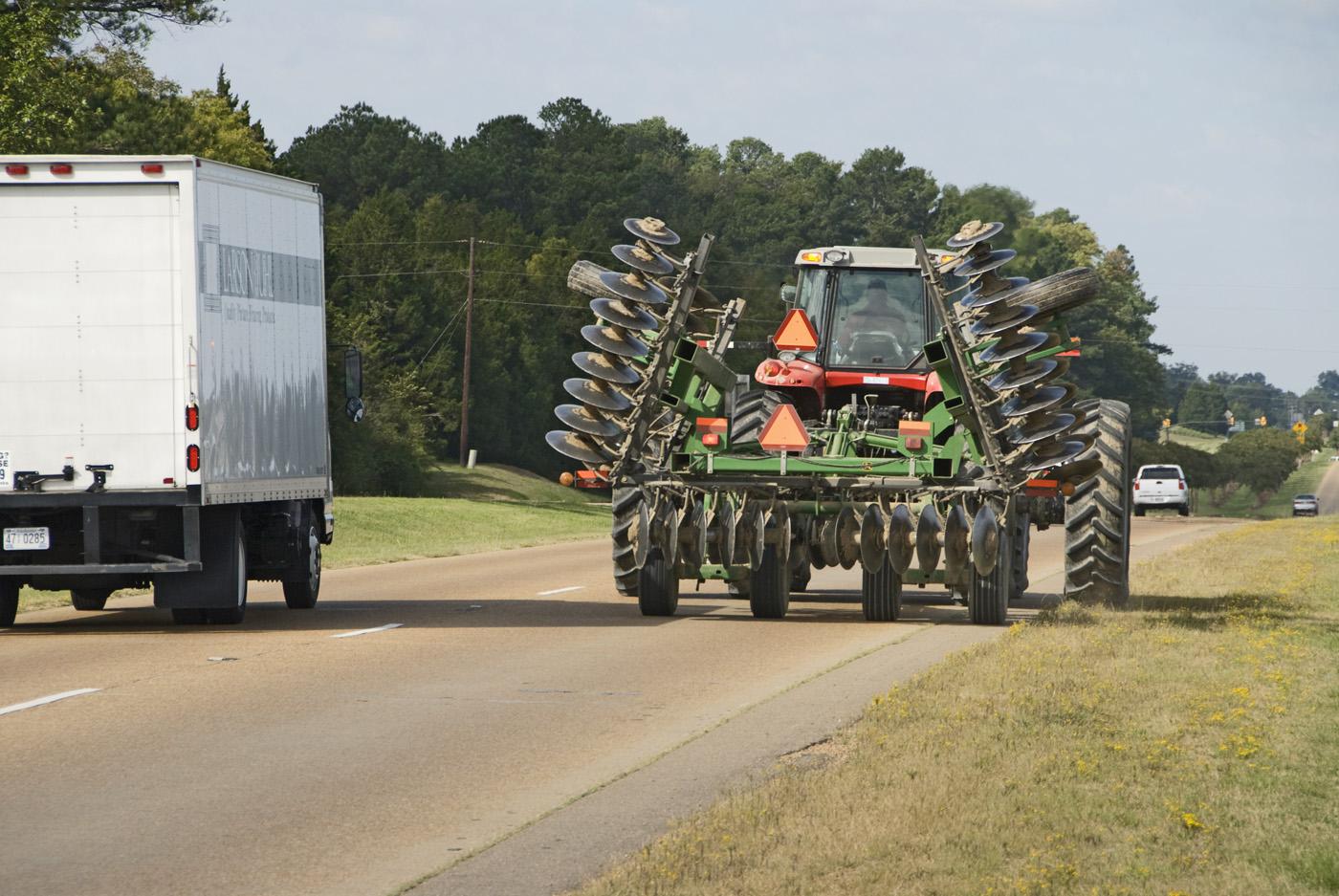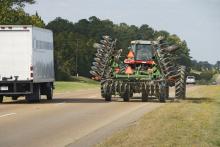Information Possibly Outdated
The information presented on this page was originally released on October 2, 2008. It may not be outdated, but please search our site for more current information. If you plan to quote or reference this information in a publication, please check with the Extension specialist or author before proceeding.
Farm machines, cars share fall highways
MISSISSIPPI STATE -- Mississippi drivers know to look out year-round for deer trying to cross roads, but fall brings another driving challenge when farm machinery joins the vehicles on the road.
Herb Willcutt, agricultural engineer with the Mississippi State University Extension Service, said the state averages 125 collisions a year involving motorists and farm machinery.
“Between 1 percent and 2 percent of these result in death to the operator of the farm machinery,” Willcutt said. “Because of the difference in weight between the two pieces, motorists in passenger vehicles fare worse in these collisions, with 65 percent causing property damage alone and 35 percent causing injury and property damage.”
Farm machinery travels on the roads when farmers must get equipment to different fields. Willcutt said it is legal to drive farm machinery on the road during daylight hours as long as traffic is not greatly obstructed.
Some of the pieces of machinery are quite large, such as combines as wide as 32 feet. These machines, heavily loaded grain-handling carts behind tractors and slow moving trucks are often on roads at corn and soybean harvest.
Cotton is harvested across the state in early fall, and this process puts up to 22-foot-wide harvesters, boll buggies, module builders and module transport equipment on highways. Hay production and transport occurs all summer, and this equipment is often large and slow.
“These pieces of farm machinery are large, heavy and often wide,” Willcutt said. “The operator may swing into oncoming lanes to avoid sign posts, mailboxes and bridge railings. Operators often must move left before making a sharp right turn. Because of the size of the equipment, the operator may not be able to see motorists approaching from behind.”
Farm equipment should display flashing lights and have an escort when needed with wide equipment. Both the equipment operator and motorists should wear seat belts for safety.
Mike Steede, George County Extension director, said farmers in his area have had close calls recently when driving their farm equipment on the roadways.
“Some of them asked that we try to educate the public that they're on the roads so motorists will be more careful,” Steede said.
Farm equipment can be on the road during the entire growing season, but it is more prevalent in the fall at harvest. Steede said their oversize proportions and slow speed can make sharing the road tricky, especially since these roads often are narrow and many have little or no shoulders.
“My advice to drivers is to slow down on local roads,” Steede said. “Large machinery cannot be stopped at a moment's notice or moved off the road quickly. Young drivers or those from more populated areas traveling on rural roads should exercise extra caution.”




